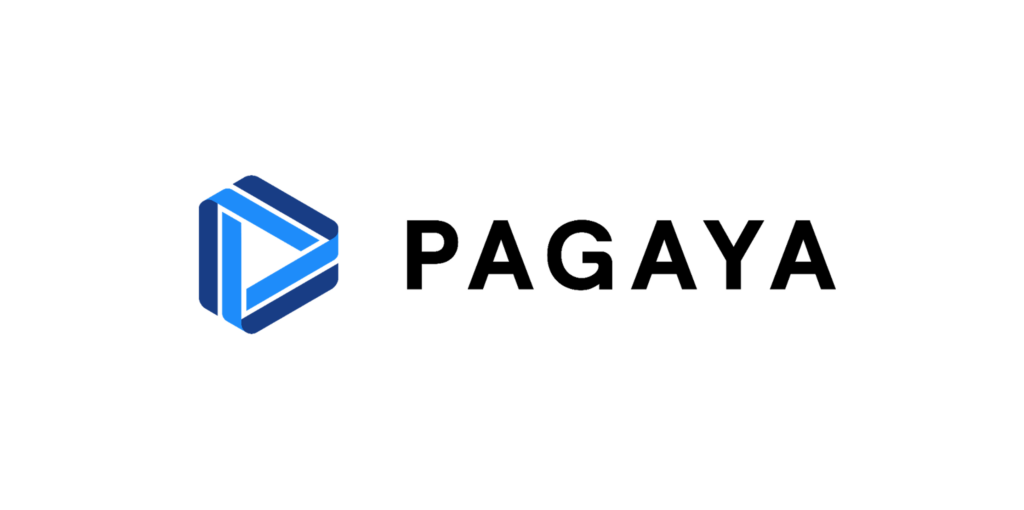The best way to do market research, in my experience, is to look for things that don’t make sense.
Allow me to explain.
When you are learning about something new, you will frequently encounter things that don’t make sense. Most of the time, your lack of understanding is a you problem. You don’t have the requisite knowledge or experience to understand the thing, but once you find someone to explain it to you (and sometimes it takes a while to find this person), it suddenly makes sense.
However, occasionally, you will encounter a thing that doesn’t make sense … and none of the expert explanations of why it actually does make sense sound quite right to you.
I’m sure you’ve experienced this exact situation before. Someone much older/smarter/richer/more accomplished sits you down and patiently explains why you are wrong (often using very fancy or technical language), and the whole time, while you’re politely nodding your head, you’re thinking, “I still don’t get it.”
In that moment, you have a choice.
You can trust the expert, even though they haven’t been able to make the thing make sense to you.
Or you can trust your intuition and conclude that this is a them problem; what they are saying doesn’t make sense because they don’t understand it, and they have just learned to ignore or rationalize their lack of understanding.
It’s a tough thing to do, especially when you are just starting your career, but I have found that trusting your intuition in these instances is one of the most useful tricks for discovering novel insights about how the world works.
So, today, I want to write about a company that I have been utterly fascinated by for the past year and explain why, even after exhausting study, they still don’t make any sense to me.
(Editor’s Note — As I always say around here, nothing in Fintech Takes is ever investment advice. You should never buy a stock, short a stock, or form any type of investment thesis based on what I write or talk about!)

Pagaya
Pagaya was founded in 2018. Over the next four years, it raised more than $145 million in equity financing from VCs, and in June of 2022, the company went public at an $8.5 billion valuation via a SPAC merger (remember those?!?)
The company started as an asset management firm focused on consumer lending. However, it has evolved into something far more unique and interesting — an embedded second-look lending network.
Second-look lending isn’t a new concept. The basic idea is that instead of rejecting an applicant for a loan because they don’t fit your credit box or you are unable to get sufficient data to decision them, you can pass them off to a different lender who might be able to approve them.
Traditionally, this experience has been clunky and more than a little embarrassing for applicants (we can’t approve you because we’re too good for you, but these guys have lower standards).
Pagaya’s innovation is to integrate directly within the lender’s digital origination workflow. When an applicant is rejected by the lender’s decision engine, they (and all of their data) can be instantly passed to the Pagaya decision engine to see if it can approve them. If it can, the lender books the loan, sells the paper to Pagaya, and retains the servicing relationship with the customer.
The front-end experience is seamless. Whether the customer is approved by the lender or by Pagaya behind the scenes, it feels to them like the lender said yes. They download the lender’s mobile app, make payments, and contact them if they have any problems. They never see or feel Pagaya’s presence at all.
To fund these loans, Pagaya relies on a variety of different mechanisms, including selling groups of loans as asset-backed securities (ABS) to investors, forward flow agreements with large investors (the investor commits to buying a stream of loans originated by Pagaya’s lending partners on an ongoing basis), and capital funds controlled directly by Pagaya (the Pagaya Opportunity Fund is the largest consumer credit fund in Israel, and Pagaya acquired additional funding when it bought its big competitor, Theorem, last year).
At the end of 2024, Pagaya had 31 lending partners, through which it has generated roughly $28 billion in new lending since its inception in 2018.
Pagaya’s biggest product is personal loans, where it got its start. The company works with many of the big non-bank personal loan providers (Prosper, Avant) and an increasing number of banks (LendingClub, SoFi, U.S. Bank).
Additionally, the company has aggressively expanded over the last few years into auto loans (Ally, Exeter Finance, Westlake Financial, OneMain Financial) and point-of-sale loans (Klarna, U.S. Bank Elavon). And it has explored (though not made much headway) in credit cards and real estate investing.
So, that’s Pagaya — an embedded second-look lending network that connects bank and non-bank lenders with institutional investors.
Now, the question is — does that make sense?
I don’t think it so.
Why Pagaya Doesn’t Make Sense To Me
The value proposition of Pagaya is fairly straightforward — they enable lenders to approve more applicants than they otherwise would without taking any credit risk, and they allow investors to acquire attractive assets (consumer loans) efficiently.
This prompts an obvious and important question — if the assets (i.e., loans) are so attractive, why wouldn’t the lenders just originate them for themselves?
A plausible answer might be something like, “Well, the assets are attractive, on a risk-adjusted basis, but banks are just very conservative and operating under very stringent capital reserve requirements.”
That’s fine, and probably true to an extent, but it doesn’t account for the fact that most of Pagaya’s lending partners aren’t banks, but rather fintech companies and non-bank lenders, which tend to have very aggressive appetites for growth and risk.
Let’s take OneMain Financial, which Pagaya signed as a lending partner in August of last year, as an example.
OneMain is a subprime lender specializing in personal loans and auto loans (which is where its partnership with Pagaya is focused). It has been in the business of auto lending since 1920 and, as such, has a tremendous amount of experience in pricing risk for subprime auto loan applicants. That experience allows it to maximize the yield on its auto loan portfolio within the boundaries of state usury laws.
Put simply — OneMain is not, by any stretch of the imagination, a conservative auto lender.
And yet, here is a quote from the Pagaya press release announcing its partnership with OneMain (emphasis mine):
Pagaya’s proprietary, AI-driven lending technology enables fintechs, banks, and other loan originators to provide broader credit access for their customers. Through this partnership, OneMain’s auto lending business will leverage Pagaya’s technology to support the company’s ability to serve more qualified customers that are outside its existing credit criteria.
This is a logical impossibility. Unless you are somehow exempt from all usury laws and interest rate caps, there is simply no way to profitably serve more qualified customers underneath OneMain’s credit box. If there were, OneMain would already be doing it. That’s their entire business model!
What this suggests to me is that Pagaya is fueling its growth through subprime lenders like OneMain by underpricing the risk of the second-look applicants it is approving, thus exposing itself and its investors to more losses.
There is some emerging evidence in support of this theory.
Pagaya Hits an Iceberg
Pagaya recently reported its Q4 2024 earnings.
At a surface level, a lot of the results look good. $2.6 billion in lending volume originated through the Pagaya network (up 9% year-over-year). $279 million in total revenue (up 28% year-over-year). A new forward flow agreement with Blue Owl Capital, which will allow the fund to buy up to $2.4 billion in consumer loans through the Pagaya network over a 24-month period.
There was just one problem, but it was a big one:
Pagaya booked substantial credit-related impairments of $229m in last quarter, bringing the total for the year to about $354m. Quarterly and annual losses reach a staggering $238m and $401m, respectively.
During the earnings call, management tried to assure investors that such charges would be a thing of the past, as problematic 2021-2023 vintages are now largely off the books, and would not have a material impact on future performance. This means that Pagaya’s largest balance sheet exposure now comes from 2024 vintages.
That quote comes from an article published by Iceberg Research, which is an activist short seller that publishes research on companies that it believes to be overvalued (Iceberg is similar to the now defunct Hindenburg Research, which targeted Block a couple of years ago).
Iceberg published a report on Pagaya last week, and while it is always worth being skeptical of activist short sellers, many of the concerns they raise about Pagaya fit with the intuitive concerns I have had about the company for a while now.
So, let’s walk through a few of them (while, again, keeping in mind Iceberg’s obvious incentive).
First, Iceberg points out that Pagaya’s claims about credit performance being a problem that is confined to the 2021-2023 loan vintages is a little hard to believe given that they were singing a different tune in 2023:
In 2023, the company invested a total of $566 million in notes and securities. On the 4Q23 earnings call, management assured investors of “disciplined capital allocation and risk management”, and that 2023 would be a “year of stability”. Management doubled down on this statement in 1Q24, saying on the earnings call that they were “seeing continued strong performance on our 2023 vintages with delinquencies trending at their lowest level since early 2021”. The company had just come off their 2023 audit with no critical audit matters flagged in its 10-K, and only $11 million of credit impairments were recognised in that quarter.
These assurances were clearly inaccurate or false.
Second, Iceberg believes that Pagaya has been using its in-house fund (the Pagaya Opportunity Fund) to obscure the losses from the worst-performing segments of its lending portfolio:
The market derives comfort from the fact that Pagaya offloads risk by selling the lowest ABS tranches to what it believes are third party investors. In reality, Pagaya has used a fund it manages as a general partner to buy these tranches. There are clear signs of heavy losses. Some of the fund’s Israeli investors have tried to redeem their investment money, only to be stonewalled by Pagaya. It’s likely a large share of their investment is gone. The investors are furious with one even urging the Israeli regulator to pursue legal action. The probability of a lawsuit is high.
And the credit-related impairments it has had to take recently are the result of its inability to continue using the Opportunity Fund to absorb these losses while giving the good segments to ABS investors:
Data from 29 of Pagaya’s publicly rated ABS transactions show that many of the lowest-quality tranches are either unrated or have been downgraded due to credit deterioration. In some cases, the company stepped in to buy back collateral to prevent further downgrades.
Pagaya has likely exhausted the Opportunity Fund’s resources and has had to rely on debt financing to finance its risk exposures. This has led to a deterioration of its own balance sheet.
Third, and finally, Iceberg believes that Pagaya will continue to see poor credit performance in its newer loan vintages and that it will attempt to use the capital it acquired through Theorem to absorb the worst of these losses:
The company claims that credit risk will improve in 2025 despite heavy impairments to its portfolio of notes and securities in 2024. But early 2024 vintages already show delinquency trends equal to or worse than 2023 for which heavy charge-offs were recorded . If these investments were marked to a yield of 14.7%, we estimate another 85% impairment to the portfolio as at 30 September 2024, or approximately $786m. This erases the company’s equity.
With the recent acquisition of peer Theorem in October 2024, we think Pagaya wants to repeat the same playbook as with the Opportunity Fund. We believe increased scrutiny will make it much harder to pull off and that investors of the Theorem fund are likely to fight to redeem their funds, just like the Opportunity Fund’s investors.
What’s Next?
We will learn a lot over the next 12-24 months.
If Iceberg is correct, it will become obvious that poor credit performance is a feature of Pagaya rather than a temporary bug, and the company’s ability to structure ABS transactions and leverage forward flow agreements to fund its lending growth will become much more difficult.
Personally, I believe that this outcome is most likely.
When your growth is primarily fueled by the origination of loans that subprime lenders don’t want, poor credit performance is a feature, not a bug. They are literally paying you to take risk that they can’t price high enough to make money on!
However, I also think it’s possible that Pagaya will find a sustainable path forward.
The embedded lending infrastructure that they have built is, by itself, impressive. As are the partnerships (and integrations) they have established with the 31 lenders in their network. There are other ways to utilize that infrastructure and those partnerships to create value, and it sounds like Pagaya is actively exploring them (they have been talking a lot recently about leveraging prescreen to help their lending partners sell more to existing customers and moving up the acquisition funnel to help lenders better leverage lead aggregators like Credit Karma).
Our industry is filled with examples of successful companies that went all-in on a bad hand and ended up hitting an inside straight on the river. It’s unlikely, but it happens. It could happen here.
The other piece of this story that I am watching is what happens to the lending partners.
The value proposition of Pagaya to lenders is outrageously strong.
You spent all the money to acquire these customers. Instead of saying “no” (and pissing them off), say “yes” to them, get paid for the loan, and use that “yes” as a springboard to build a long-term, multi-product relationship with them!
It’s not surprising to me that Pagaya has signed up big names like U.S. Bank, SoFi, and Klarna. They are literally offering them risk-free money. Lenders aren’t in the business of turning down risk-free money.
But maybe they should be.
Even if they don’t own the asset, Pagaya’s lending partners still own the relationship with the customer and the compliance obligations that come with originating and servicing the loans. There is still risk there, even if it’s not credit risk.
I have no idea how Pagaya’s lending partners ensure that Pagaya’s fully automated credit decisioning processes conform to their compliance requirements for originating loans or how they align their interests during the loan servicing process (maintain a good relationship with the customer) with the servicing interests of Pagaya and its investors (make sure the customer makes their payments).
I don’t know if these lenders’ regulators have asked them these questions yet. Hell, I’m not sure the regulators even know that many of the “yesses” that these lenders are giving to customers are happening because of Pagaya!
But eventually, they will. And when they do, I think it’s very possible that they will express many of the same concerns that I (and now others) have been raising.


